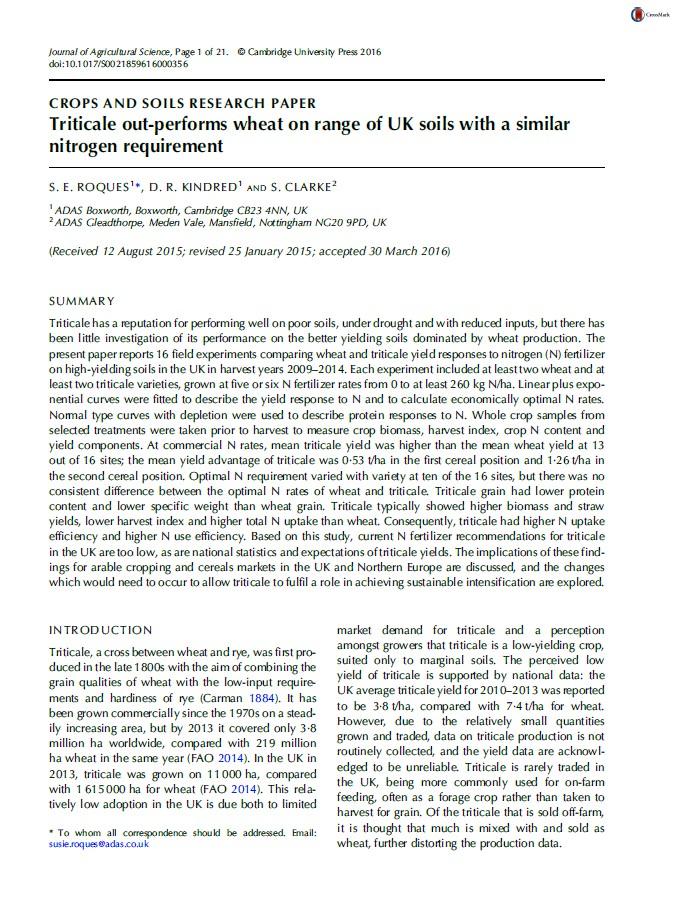Triticale out-performs wheat on range of UK soils with a similar nitrogen requirement

Paper published in Journal of Agricultural Science 2017, vol 155, p261-281
SUMMARY-
Triticale has a reputation for performing well on poor soils, under drought and with reduced inputs, but there has been little investigation of its performance on the better yielding soils dominated by wheat production. The present paper reports 16 field experiments comparing wheat and triticale yield responses to nitrogen (N) fertilizer on high-yielding soils in the UK in harvest years 2009–2014. Each experiment included at least two wheat and at least two triticale varieties, grown at five or six N fertilizer rates from 0 to at least 260 kg N/ha. Linear plus exponential curves were fitted to describe the yield response to N and to calculate economically optimal N rates.
Normal type curves with depletion were used to describe protein responses to N. Whole crop samples from selected treatments were taken prior to harvest to measure crop biomass, harvest index, crop N content and yield components. At commercial N rates, mean triticale yield was higher than the mean wheat yield at 13 out of 16 sites; the mean yield advantage of triticale was 0·53 t/ha in the first cereal position and 1·26 t/ha in the second cereal position. Optimal N requirement varied with variety at ten of the 16 sites, but there was no consistent difference between the optimal N rates of wheat and triticale. Triticale grain had lower protein content and lower specific weight than wheat grain. Triticale typically showed higher biomass and straw yields, lower harvest index and higher total N uptake than wheat. Consequently, triticale had higher N uptake efficiency and higher N use efficiency. Based on this study, current N fertilizer recommendations for triticale in the UK are too low, as are national statistics and expectations of triticale yields. The implications of these findings for arable cropping and cereals markets in the UK and Northern Europe are discussed, and the changes which would need to occur to allow triticale to fulfil a role in achieving sustainable intensification are explored.



